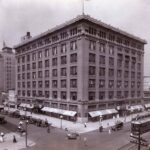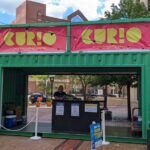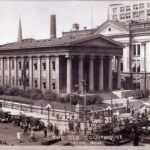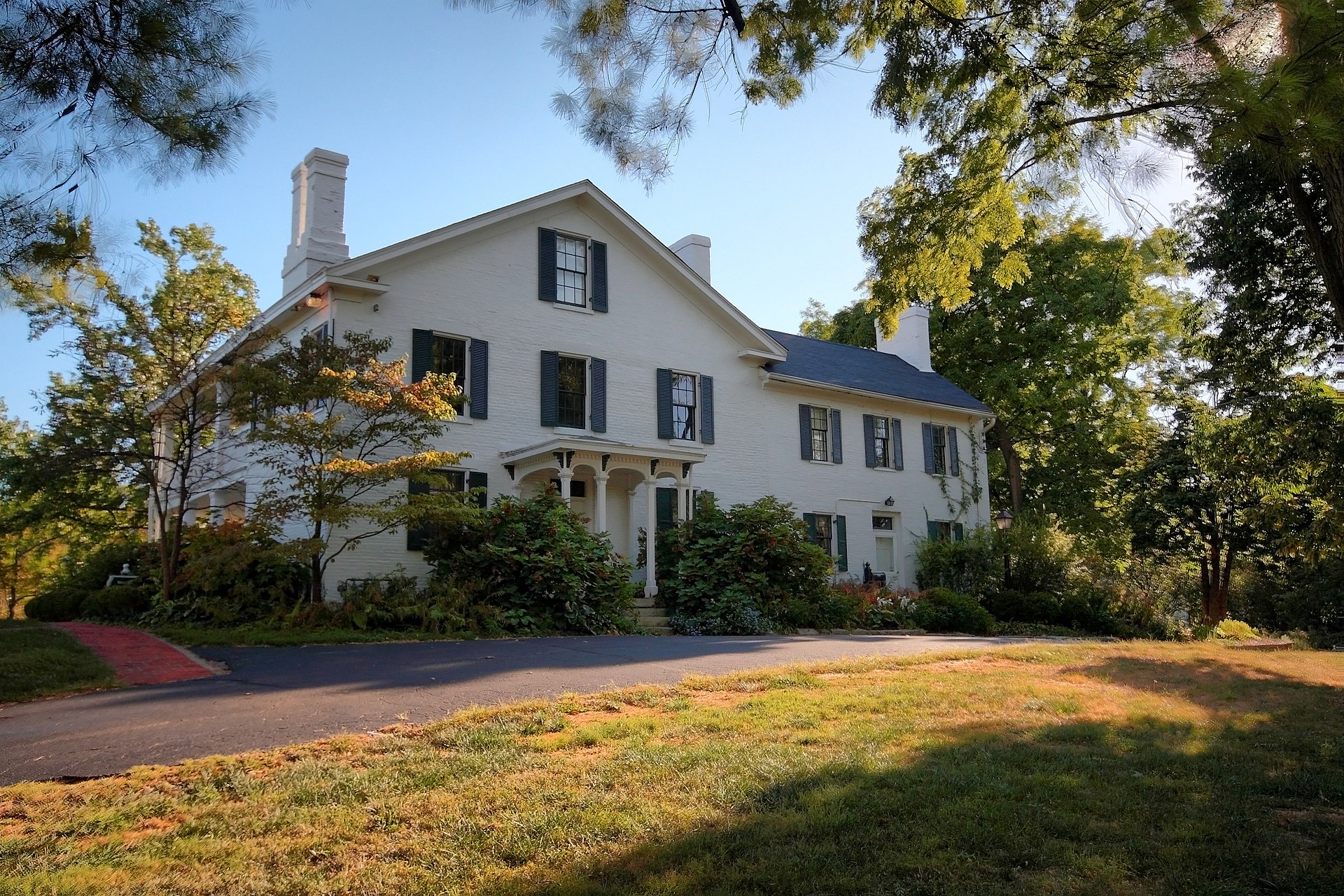Editor’s note: The following article by James Steeber is the first installment in a series of reflections about downtown Dayton

Recently, a posting to Facebook of a 1974 color photograph of the new Homestead Federal Building in Downtown Dayton (2nd & Jefferson), spurred my memories of that year. I admired the building from the time I moved back to the city that summer with my parents. To me it represented what Downtown expressed; the founding and center of the region were there. All the big stuff was in “mid-town”. Most of the region worked there, and most everyone had some reason to go there. The origin of the city, Downtown is where most everything had been only decades before.
The posting of that photograph reminded me of that hopeful and colorful era – of local companies that had made good, celebrating with new creations – ever implying that Downtown still had a path back to the tumult of what had been when thousands smacked the city sidewalks shopping in specialty stores, the celebrated departments stores, the drug stores, and the five-and-dimes. They found solace in movie theaters and restaurants, diners, and counters. Everyone’s doctor was Downtown – even their lawyers and car dealers. They bought pianos, radios, furniture suites, formal suits, endless arrays of shoes and hats, and they worshipped there. They attended legitimate theater and Vaudeville there. On weekends they roller skated downtown.
South Ludlow Street became “The Fifth Avenue of Dayton” by the mid-nineteen-teens – a shocking moniker considering its current state, but this energy was still sending out echoes in 1974. Yet, fewer and fewer of the young who came through the district would believe that this had been the center of the universe, and eventually it became, through rings of happenstance, a largely empty zone of real estate – vacant shapes on the horizon. There were always embers of hope, with new life being given to the Victoria Theatre, two office towers rising, the burgeoning riverfront, and a truly fine new baseball stadium. Yet, sand was still escaping from the valve, and even Arcade Square – the loved and ancient city market and shopping center – closed thirteen years after it re-opened as a center of fun (and essentially as a mall), only to be crassly abandoned over time.

Finally, in 1999, Daytonians winced in pain, when Rike’s (then on its third conglomerated name), a beloved million-square foot keep of retail and life, was imploded before their eyes and on live TV – a veritable execution of Downtown! It felt as if developers were even punishing Downtown and its adherents.
Since then, the newer components arrived, led by the grand Schuster Center and its palm court and first-class opera house. Yet so many Daytonians weren’t happy. The stores were missing, the once-crowded sidewalks were bathed in empty light, and fears of a no-man’s land began to accrue. “Can’t go there; too dangerous.”
It didn’t matter if it was not. The feeling that the center city was past-tense was fueled by investments that now sought suburban audiences – many who had never actually set foot on a patch of downtown sidewalk. The center city had, essentially, moved out of town. In this series I hope to show that Downtown Dayton, as Dayton itself, is an ever-shifting creation that can yet be the center of light, hope, commerce, and joy.
About the author:
A resident of New York City, James Steeber has spent a career in music, photography, and in a world where corporate life meets the performing arts. For fifteen years, in New York, Steeber worked as a pianist, composer, and collaborator with the top modern dance companies of New York City. This chapter included eight years at the Juilliard School’s Dance Division. As a musical creator, Steeber found his way to the Yamaha Disklavier, leading him on a path to eventually become director of Yamaha Artist Services in New York – a national company program.
While at Yamaha, Steeber was able to assist numerous prominent and rising artists with needs relating to musical instruments, recordings, publicity, and general support. As a photographer, he enlisted photojournalistic skills in covering musical events while being able to write about them.
Since then, James Steeber has maintained a busy schedule relating largely to the piano – which includes pursuing a reputation as an able stride pianist, and once again, since 2017, finding himself on the staff of the Juilliard School as a musician.
While not born in Dayton, Steeber’s mother and her siblings were born there – the children of Eastern European immigrants – helping to foment a lifetime bond to the Gem City, its unusual magnetism, and its kaleidoscopic changes.




Leave a Reply